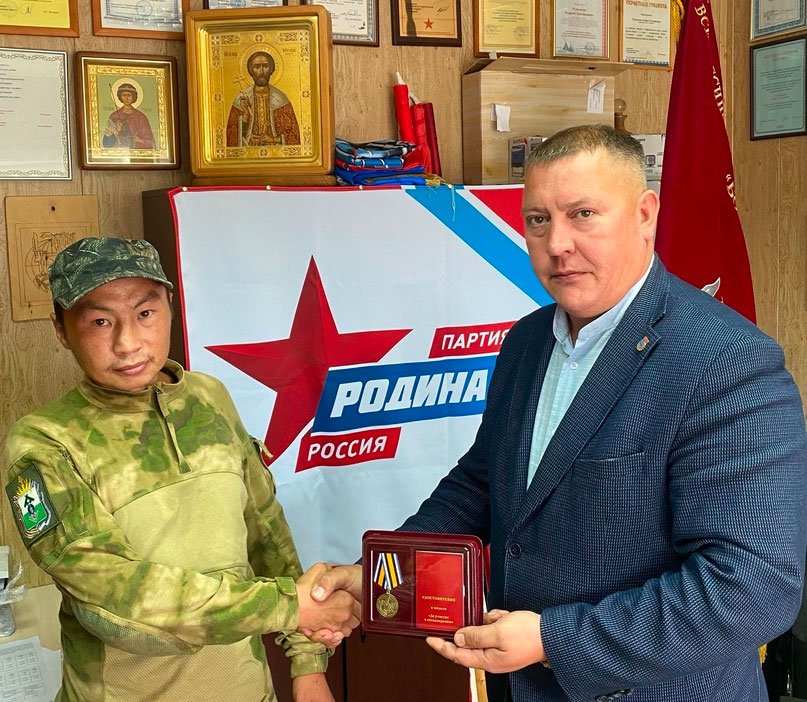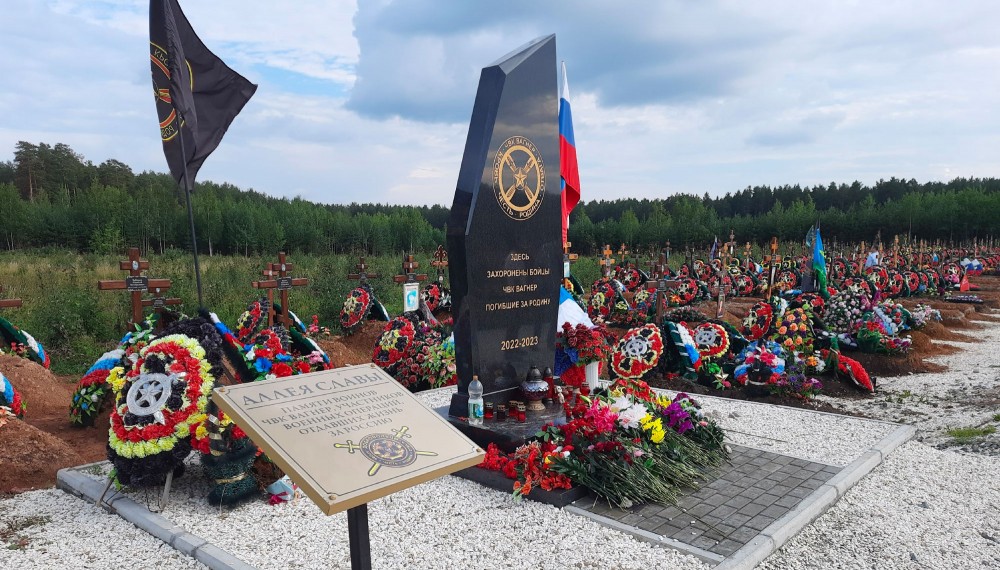
More indigenous men from Russian Arctic are killed in Moscow's war of aggression
ADVERTISEMENT
The farewell ceremony for Vasily Ivanovich Taleev took place in the hospital morgue of Naryan-Mar, the regional capital, on the 31st of January 2023. He was later buried in his home town of Nelmin Nos, local social media inform.
Taleev had signed up for service for mercenary group Wagner and was reported killed in early December. He was an ethnic Nenets and belonged to a family of reindeer herders from the far northern Nenets Autonomous Okrug. Many of his relatives still live the traditional Nenets lifestyle on the local tundra and herd big flocks of animals.
Vasily Taleev is one of many young men from indigenous communities in the Russian north killed in Russia’s war against Ukraine.
Alone from the village of Nelmin Nos three men are reported killed. In addition to Taleev, fellow villager Vasily Taibarei and Yakov Apitsyn are on the death list.

And more men from the small village are still fighting on the occupied land. Among them is Yevgeny Vasilevich Taleev, a soldier who operates under the nickname “Rambo.” In mid-August this year, during a leave from the frontline, the corporal was awarded a medal “for participation in the special military operation.” Taleev serves in the 61th Naval Infantry Brigade, the Northern Fleet forces based in the Kola Peninsula.
ADVERTISEMENT

During governor Yuri Bezdudy’s visit to Nelmin Nos in late August, Taleev took part in the regional leader’s meeting with soldiers’ relatives. Judging from photos shared by Bezdudy, there are up to ten local men from Nelim Nos in the war.
In the meeting, Yevgeny Taleev told about his service, warriors and life on the frontline. “Everything is provided to us and the fighting spirit is high,” he reportedly underlined to the soldiers’s relatives.
Nelmin Nos is located about 40 km north of regional capital Naryan-Mar. It has about 500 inhabitants.

Several more small towns and villages in the region have sent men to the war. Many will never return home.
According to an online registry, there were by early September 2023 a total of 31 men from the Nenets AO killed in the war. A significant number of them were ethnic Nentsy. An even higher number is reported killed in the neighboring region of Yamal-Nenets AO. From there, at least 70 are killed. Many of them were members of indigenous communities.
The registry includes only a small portion of the actual number of men killed in the war. Many thousands are unaccounted for and might never be found.
Another place hit hard by war is Yar-Sale, the village located on the banks of the Ob Bay. At least three local men are on the death list. They all have the same surname. Artyem Khudi, Sergei Khudi and Anatoly Khudi were reported killed in the first half of 2023.

In a statement, the family of Anatoly Khudi announces that the young man died in Bakhmut in service for the Wagner Group.
“He was a loving husband, son, father, brother, nephew, uncle and friend. He left us very early! He will always be in our hearts! We remember, we love and we grief,” the family says.
The far northern village has more men still fighting in Ukraine. Among them is Vladislav Khudi, whose parents in late December 2022 met with the head of local authorities.
During the meeting, the mother and father of the soldier were awarded a letter of acknowledgement from the regional governor “for their decent upbringing their son - a patriot of the motherland.”
A similar situation is found in the Tazov municipality, a part of the Yamal-Nenets region, where five men all carrying the surname Salinder are reported killed.
Arkady Yashevich Salinder, Aleksandr Aleksandrovich Salinder, Andrei Sergeevich Salinder, Dmitry Temsovich Salinder and Artyom Salinder were all killed in the period between March-August 2023. They are likely to belong to the same family.
Two of them served for Wagner.

Judging from available data, men from remote regions and villages are over-represented in the statistics of killed soldiers.
Symptomatically, the registry that by early September 2023 included more than 31,000 names has only 120 people from the City of Moscow. Meanwhile, the region of Arkhangelsk has 247 names.
The same applies to the respective region where a major part of the ones killed come not from the regional capitals, but from villages and small towns.
In the Yamal-Nenets Autonomous Okrug, only ten of the 70 names recorded came from regional capital Salekhard.
According to Eduard Yaungad, a member of the Yamal-Nenets regional parliament, men from indigenous communities are well suited for fighting.
“The guys from the tundra have always distinguished themselves with strength and endurance,” he said in a comment about a Nenets warrior that reportedly saved the lives of two wounded soldiers dragging them for hours to safety.
However, there are other reasons that make young indigenous men sign up for war.

According to Andrei Danilov, the high number of indigenous men fighting in Ukraine is related with local social and economic problems.
“Many indigenous groups are poor and troubled by economic depression, and federal authorities have never made any major effort to improve their position.”
“Some people, for example from Buryatia, are forced to fight in order to survive, many have been forced into poverty, alcoholism and now they are pushed into battle as cannon fodder,” Danilov told the Barents Observer.
According to Danilov, indigenous communities are vulnerable and the loss of young local men can have big consequences for the group.
When talking to the Barents Observer in fall 2022, Danilov did not know about any men from the Sámi community in the Kola Peninsula that had been drafted.
“Considering the low number of Sámi people, the loss of a man would be a great loss for the community,” he underlined.
ADVERTISEMENT
The Barents Observer Newsletter
After confirming you're a real person, you can write your email below and we include you to the subscription list.






